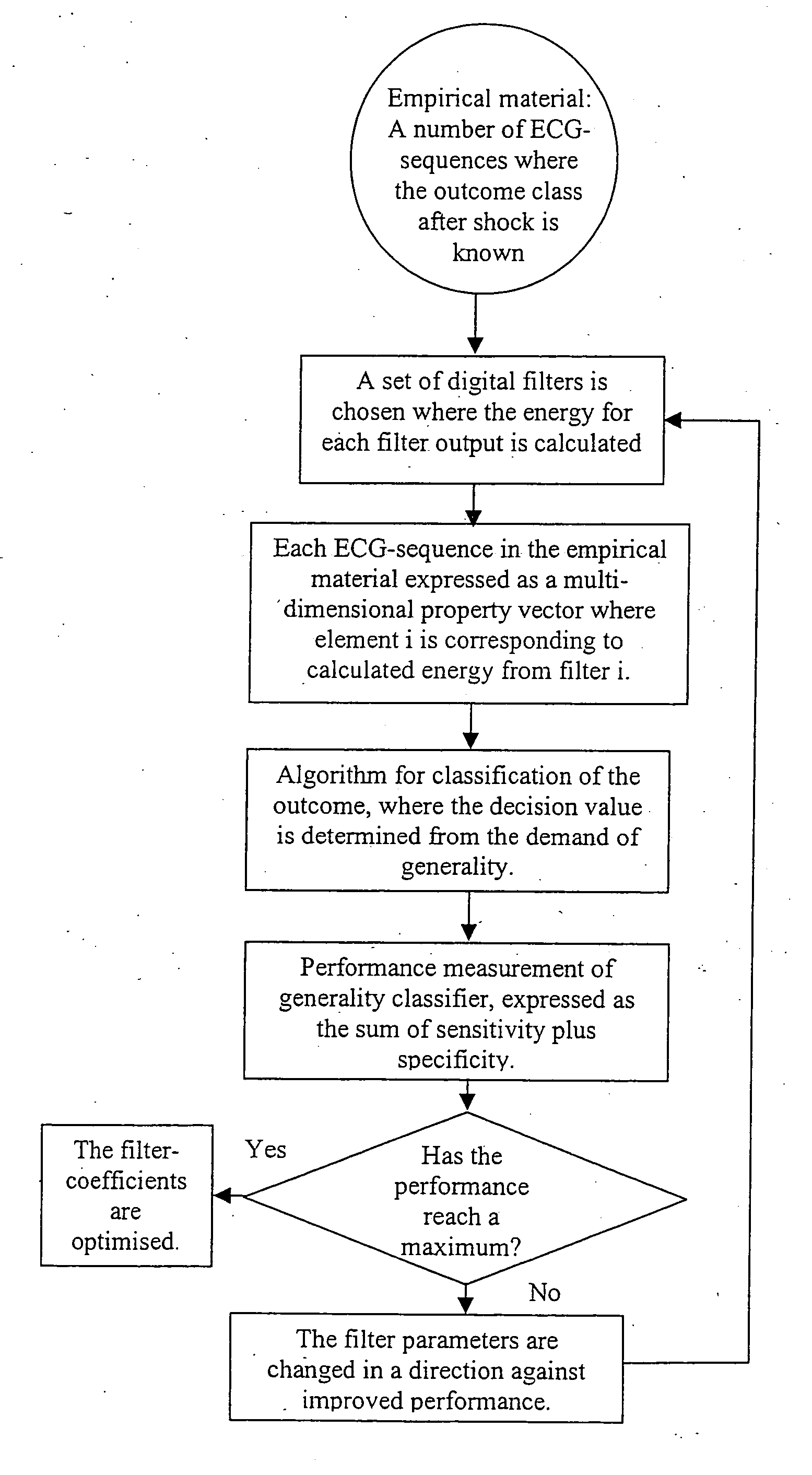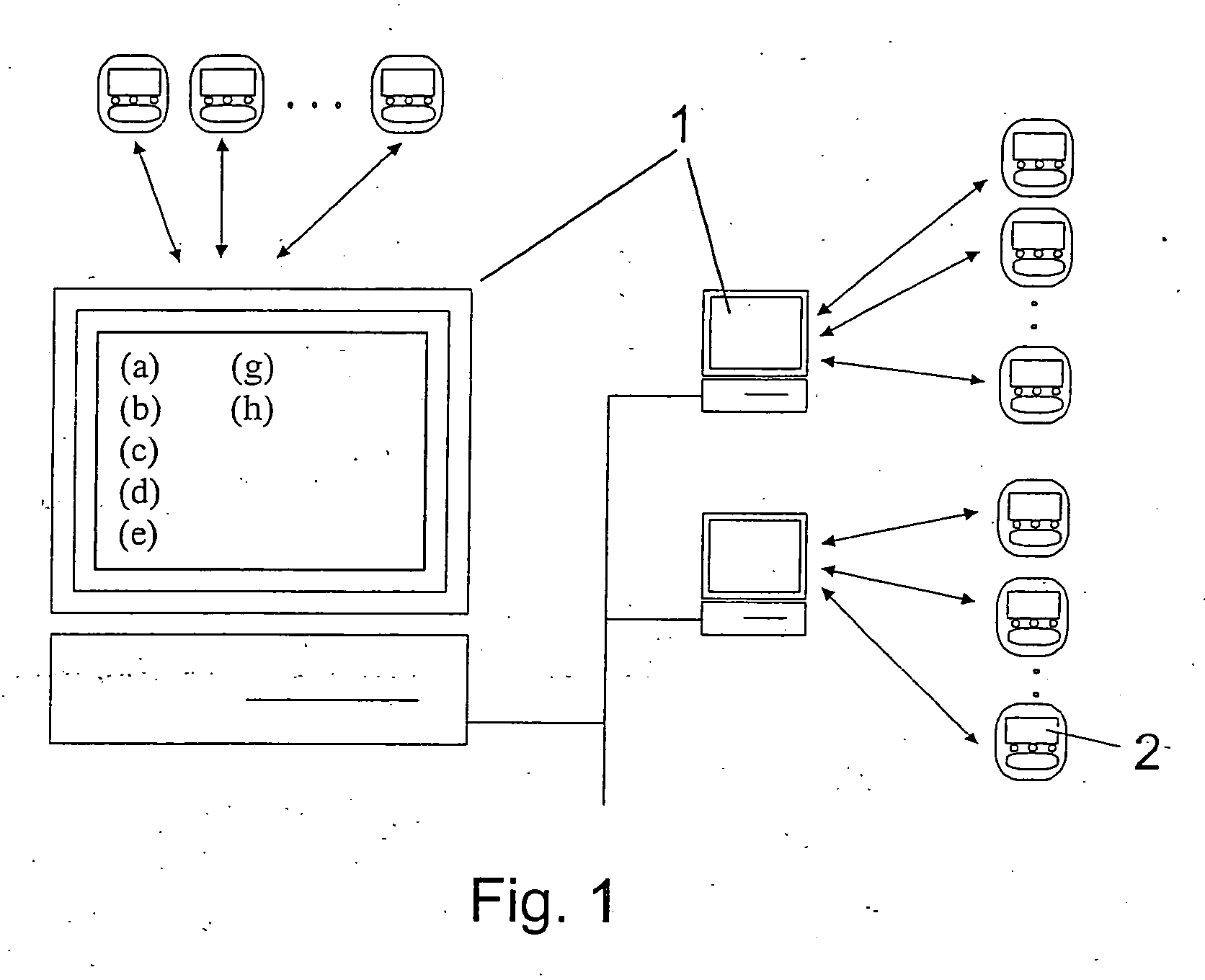System for calculating the anticipated outcome of an immediately following defibrillator shock
a technology of anticipating outcome and defibrillator, which is applied in the field of anticipating outcome of an immediate following defibrillator shock, can solve the problems of no cpr, further aggravated situation of vital organs, brain damage, etc., and achieve the effect of improving algorithms
- Summary
- Abstract
- Description
- Claims
- Application Information
AI Technical Summary
Benefits of technology
Problems solved by technology
Method used
Image
Examples
Embodiment Construction
[0043] The system consists of one, alternatively several, computer(s) 1 in a network that can communicate with a number of positioned analysis units 2. These may either be integrated into equipment (U1, U2 . . . ) such as defibrillators or ECG monitors, or they may occur in or as a support product used during the resuscitation attempt. The analysis units 2 generally operate independently of the computers 1, however after use, the analysis units could deliver field data to the computer 1, and could also receive adjusted algorithms for calculation of property vector and / or PROSC
[0044] The analysis unit 2 is normally connected to other subsystems, cf. FIG. 2:
[0045] Some of these subsystems are standard in equipment such as defibrillators and ECG monitors, and these are as follows:
[0046] Electrodes E, which provide input on ECG and impedance as well as means for providing defibrillator energy to the heart, are connected to: An ECG measurement system 3, an impedance measurement system...
PUM
 Login to View More
Login to View More Abstract
Description
Claims
Application Information
 Login to View More
Login to View More - R&D
- Intellectual Property
- Life Sciences
- Materials
- Tech Scout
- Unparalleled Data Quality
- Higher Quality Content
- 60% Fewer Hallucinations
Browse by: Latest US Patents, China's latest patents, Technical Efficacy Thesaurus, Application Domain, Technology Topic, Popular Technical Reports.
© 2025 PatSnap. All rights reserved.Legal|Privacy policy|Modern Slavery Act Transparency Statement|Sitemap|About US| Contact US: help@patsnap.com



